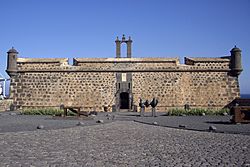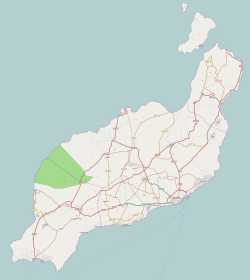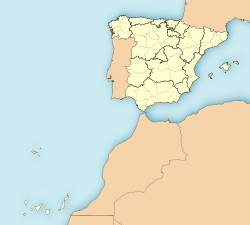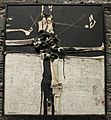Castillo de San José facts for kids
Quick facts for kids Castillo de San José |
|
|---|---|
| Arrecife, in Lanzarote, Spain | |

Courtyard and gateway
|
|
| Coordinates | 28°58′15″N 13°32′00″W / 28.97089°N 13.53333°W |
| Site information | |
| Other site facilities |
Art Museum |
| Site history | |
| Built | 1779 |
The Castillo de San José (which means Castle of San José) is a cool old fortress and an art museum. You can find it in Arrecife, a town on the sunny Canary Island of Lanzarote.
A Look Back in Time
This castle was built a long time ago, between 1776 and 1779. It was made to protect the island from pirate attacks. But it also had another important purpose. At that time, many people on Lanzarote were struggling with hunger and had no jobs.
The island had faced tough times, including a big volcanic eruption from Timanfaya between 1730 and 1736. This eruption ruined much of the land where farmers grew food. So, King Charles III of Spain wanted to help the islanders. He ordered the castle to be built. This project gave many people much-needed work. Because of this, the castle became known as the Fortress of Hunger.
The castle sits high up on a cliff, looking over the Port of Naos. It's shaped like a letter "D" with curved walls facing the sea. On the side facing the land, there are two small towers. A moat, which is a ditch filled with water, protects the back wall. You cross a drawbridge to get to the main entrance. The castle is made from strong stone blocks that came from volcanic rock. Inside, there are rooms with curved ceilings that were mostly used to store gunpowder.
From Fortress to Art Museum
In the 1970s, the old fortress got a new life! A famous artist named César Manrique, who was born nearby, helped to fix it up. He redesigned the inside to create a museum for modern art. The museum opened in 1976. It's called the International Museum of Contemporary Art (or MIAC for short).
The art you'll see there is mostly from the years between 1950 and 1980. It focuses on different kinds of abstract art. This includes modern sculpture, kinetic art (art that moves), and geometric abstraction (art made with shapes). Most of the artworks are by Spanish artists. Some famous names include Antoni Tàpies and Eusebio Sempere. There's also a special part of the museum just for the Canarian artist Pancho Lasso.
Outside, the castle's courtyard is also used to show off cool outdoor sculptures. Below the museum, a part of the fort was turned into a restaurant. You can go between the museum and the restaurant using a spiral staircase. The dining room has big, curved windows that offer amazing views of the harbor and the ships below.
Pictures of the Castle and Art
See also
 In Spanish: Castillo de San José para niños
In Spanish: Castillo de San José para niños








